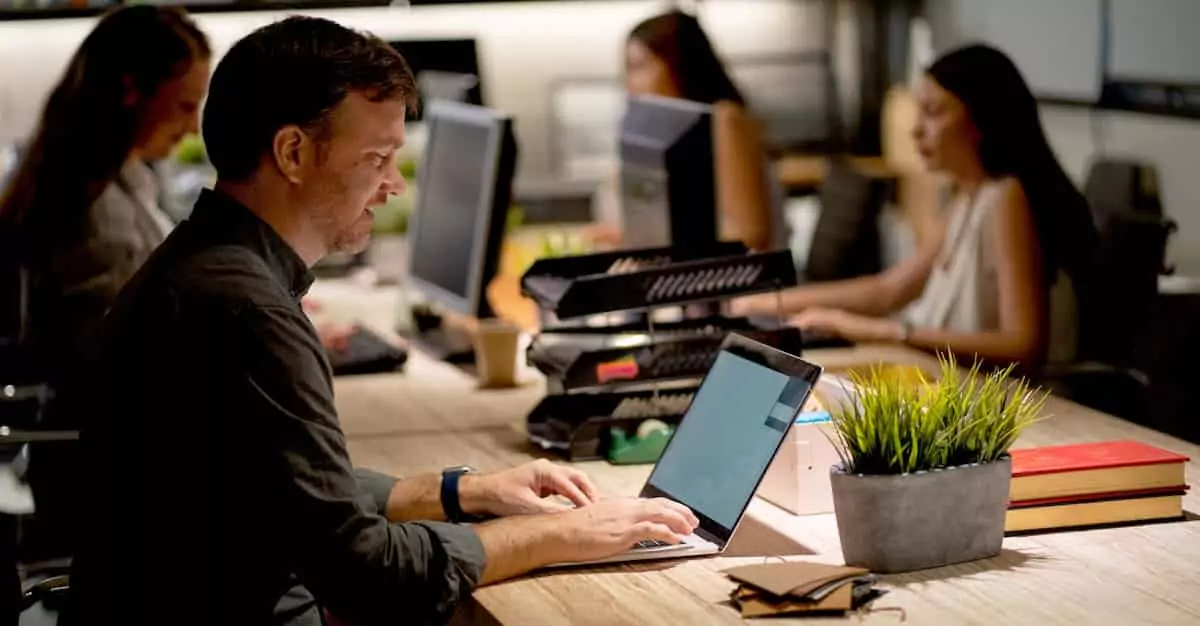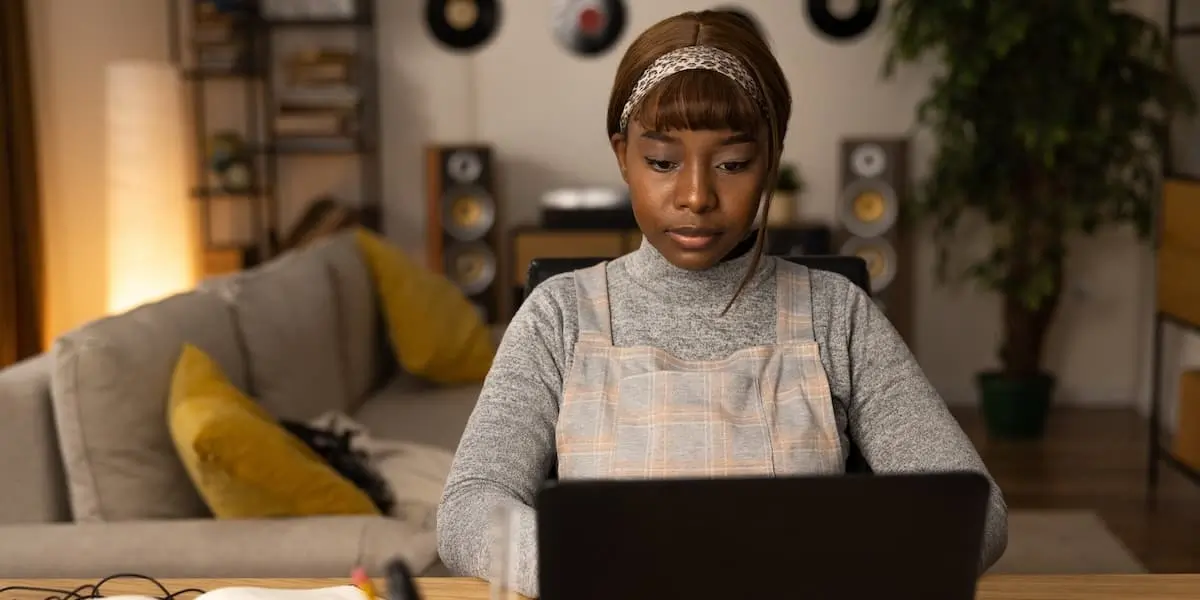Curious about what it takes to become a junior product designer? Find out everything you need to know in this full career guide.
A junior product designer is an entry-level design professional, typically hired into the product design team. They work at startups, large corporations, non-profits, and government bodies—essentially any company that provides a product or service to human users.
If you’re keen to start your career in product design without any prior experience, a junior product designer role will likely be your first stepping stone into the industry.
But, before you make the leap, it’s important to get fully clued-up on what the role entails—as well as what it takes to qualify.
To help you, we’ve compiled everything you need to know in this handy career guide. We’ll cover:
- What does a junior product designer do?
- A day in the life of a junior product designer
- What skills and qualifications do junior product designers need?
- How much do junior product designers earn?
- How to become a junior product designer (step-by-step)
- Key takeaways and next steps
- Junior product designer FAQ
Let’s begin!
What does a junior product designer do?
A junior product designer is an integral member of the product design team. They contribute to the overall success of the product they’re working on—be it a digital product like an app or a website, or a physical product like shoes, backpacks, or coffee machines.
In a small startup, a junior product designer may work closely with just one or two other designers. In a larger company, they might be one of several junior designers with many mid-level and senior product designers above them. It all depends on the size and setup of the team.
Regardless of where they work, junior product designers can expect to be involved in all aspects of the product design process. They help to design new products and improve existing ones, ensuring that the target users are happy and that business goals are met.
Junior product designers may assist with or be solely responsible for:
- Conducting market and competitor research
- Conducting user research (such as interviews, card sorting, and user surveys)
- Creating personas that represent the product’s target users
- Brainstorming new product concepts and features
- Creating sketches, wireframes, and prototypes
- Shaping the UI design of the product—that is, the product’s visual and interactive properties (this only applies to digital products)
- Running usability tests and using the data gathered to make design decisions
- Creating and maintaining design documentation
Throughout their work, junior product designers collaborate closely with key stakeholders from different areas of the business—including senior designers, product managers, and developers or manufacturers.
That’s the role in a nutshell. Now let’s consider how an average day in the life of a junior product designer might play out.

A day in the life of a junior product designer
Imagine you’re a junior product designer at a tech startup called TutorFoundry.
TutorFoundry provides an app that connects high school students with tutors in a range of different subjects. Students can book virtual lessons or find local tutors for in-person sessions. The app is still in its infancy, so the product design team is focusing on improving the product and refining the user experience.
Here’s how your working day as a junior product designer at TutorFoundry might look.
Morning
09:30 am – 10:00 am: Prepare for the day ahead
You arrive at the office, grab a cup of coffee from the kitchen and get settled at your desk. You prepare for the day by going through your emails and Slack messages and checking Asana (your team’s project management tool) to get an overview of your current tasks.
10:00 am – 10:30 am: Team meeting
The day officially begins with a quick product design team meeting. You get together to discuss ongoing projects, share updates, and align on priorities for the day.
10:30 am – 12.30 pm: User research analysis
Your main task for the day is to go through the data collected from a recent round of user interviews. You spend the next two hours conducting thematic analysis—reading through transcripts, assigning codes or labels to quotes that capture interesting concepts or ideas, and then grouping them into overarching themes.
Afternoon
1:45 pm – 3 pm: Continue with user research analysis
After lunch, you continue with your user interview analysis. This type of qualitative research analysis generally takes much longer than for quantitative data, so it’s not unusual that it takes up most of the day. You can learn about the difference between qualitative and quantitative data in our guide.
3:20 pm – 4:15 pm: Prepare your research presentation
With your research analysis complete, the next step is to compile all key insights into a simple presentation. You’ll share this with the senior product designer and the product manager in tomorrow’s morning meeting and use the insights to inform an upcoming ideation session.
4:15 pm – 5.30 pm: Create wireframes
Time for a gear change! Previous usability tests uncovered some issues with the TutorFoundry search results page. Users should be able to search for tutors based on their individual requirements and quickly locate suitable experts within the search results.
However, with the current design, users are presented with far too much information on one page, making it difficult to scan through and pick out relevant matches. So now it’s your job to redesign the results page, ensuring it’s clear, easily scannable, and clutter-free. You get to work creating basic wireframes for the new layout.
Evening
5:30 pm – 6:20 pm: Prepare for upcoming ideation session
You’ve got an ideation session scheduled at the end of the week with the rest of the product design team. This will be based on your findings from the user interviews, and the goal will be to come up with potential solutions to the problems highlighted.
You spend the remainder of the working day researching competitors to see how they address these particular challenges and thinking about potential solutions you might focus on during the team ideation session.
6:20 pm – 6.45 pm: Wrap-up
The day is done! And what a productive day it was. You’ve decided to work from home tomorrow as you don’t have any meetings scheduled, so you pack up your laptop and head out.
What skills and qualifications do junior product designers need?
Junior product designers enjoy a varied role that spans research, analysis, and hands-on design work. The role is both technical and creative, and it’s extremely collaborative. As such, junior product designers require a diverse skill set that includes both soft and hard skills.
What skills do employers look for when hiring junior product designers?
We scoured live job ads to gather the key skills that employers look for when hiring junior product designers. Based on our research, the most important skills and qualities for a junior product designer are:
- A user-centric mindset; the ability to understand the end user’s needs and design with those in mind
- Comfortable interpreting data and using it to make informed design decisions
- Creative thinking and problem-solving
- Strong knowledge of the product design process and the ability to carry out practical design tasks such as wireframing and prototyping
- A deep understanding of UX and UI design principles and best practices
- Effective communication skills
Successful junior product designers also demonstrate a proactive attitude, a willingness to learn, the ability to give and receive constructive feedback, and strong attention to detail.
What qualifications and experience do you need to land a junior product design role?
Junior product designer is an entry-level job title, so most employers won’t require you to have extensive experience in the field. Still, some or all of the following will help you qualify for junior product design roles:
- A relevant qualification such as a Bachelor’s degree in industrial or product design, or a certification obtained through an online course or product design bootcamp
- Hands-on experience through a design internship or project work completed as part of a product design course
- Experience using popular design tools (more on those in the next section!)
Employers will also take transferable skills and experience into account. For example, if you’ve worked in a role that requires extensive collaboration and communication, hiring managers will consider that an asset—even if it’s in an unrelated field.
What tools do junior product designers need to know?
Product designers rely on dedicated tools at each stage of the product design process. When hiring junior product designers, employers will look for proficiency in—or at least some knowledge of—the following tools:
- Figma
- The Adobe Creative Suite (primarily Illustrator, and InDesign)
- Project management tools such as Asana or Trello
- Google Workspace tools (Google Meet, Google Docs, Google Sheets, and Google Slides)
- User research and analytics tools such as Maze and Hotjar
- Collaboration and documentation tools such as Notion, Miro, and Mural
- If you’re focusing on industrial product design and / or physical products, you’ll need to be familiar with 3D CAD software as well as rendering and modeling tools such as Solidworks, Rhino, KeyShot, and Fusion360
Note that you don’t need to be proficient in all of these tools to qualify for a junior product design role. Most importantly, you should be able to demonstrate at least basic working knowledge of design software. Beyond those industry-standard tools, every company has its own unique tool stack which you can learn on the job.
For a closer look at tools and software, check out the top 10 tools every product designer needs.
How much do junior product designers earn?
Now for the question of salary. How much can you expect to earn once you get hired as a junior product designer?
Here’s how much junior product designers typically earn in different locations:
- In the United States, the average salary for a junior product designer is around $72,000 (based on data from Glassdoor, Indeed, and PayScale)
- In the UK, the average salary for a junior product designer is around £32,000 (based on data from Glassdoor)
- In Canada, the average junior product designer salary is around $57,000 (based on data from Glassdoor)
- In Germany, junior product designers earn around €44,000 per year on average (based on data from Glassdoor)
- In Australia, the average salary for a junior product designer is around $74,500 per year (based on data from Glassdoor)
Keep in mind that salaries vary depending on location, industry, exact job title, and years of experience. For a more accurate benchmark, use sites like Glassdoor, Indeed, and PayScale to check average salaries in your location.
Want to see how your earning potential increases as you gain more experience? Check out our full product designer salary guide.
How to become a junior product designer (step-by-step)
You now have a solid overview of what employers look for when hiring junior product designers. So how do you get yourself in the running for such roles?
Here’s how to become a junior product designer.

1. Learn essential product design skills
The first step is to learn fundamental product design skills.
If you’re completely new to the field, a product design course or bootcamp is one of the most effective routes. With the structure of a professional curriculum and expert guidance from tutors and mentors, you’ll cover all the most important concepts and topics in a logical order—ensuring you finish up with a well-rounded and up-to-date product design skill set.
For help choosing a relevant course, refer to our comparison of the 10 best product design courses (including both free and paid options).
2. Gain practical experience
In your quest to become a junior product designer, you don’t just want to learn about product design. You also need to develop relevant practical skills and apply your newfound knowledge to real-world scenarios.
This is perhaps one of the trickiest aspects of breaking into the field. It can be difficult to gain job-relevant experience before you land an actual job—but it’s certainly not impossible.
When choosing a product design course, look for a curriculum that includes practical exercises and project work. This will give you valuable hands-on experience to draw from when applying for junior product design roles.
You might also consider a product design internship. Of course, this won’t be a feasible option for everyone—but if you can spare the time and are financially in a position to do so, internships can be a great stepping stone towards your first full-time product design role.
3. Build your product design portfolio
When it comes to applying for junior product designer roles, you’ll need to provide tangible proof of your skills. As you develop your product design skill set, it’s important that you also build out your product design portfolio.
A product design portfolio is a personal website that showcases projects you’ve worked on. It typically includes an ‘About’ page or section, links to social profiles and contact details, and—most importantly—project case studies highlighting your work.
Each case study should outline your role on the project, the user problem you set out to solve, the process you followed, the final outcomes, and the measurable impact of your work. You can learn more about how to format your product design portfolio in this post: 10 Awesome Product Design Portfolios (and What We Can Learn From Them)
4. Grow your network
They say that around 60% of jobs are found through networking—not through online job sites. If you want to increase your chances of landing a junior product designer role, focus on growing your network and making relevant connections in the industry.
LinkedIn is currently the go-to platform for online networking, so start there. If you’ve not got a LinkedIn profile, it’s time to set one up. If you’re already active on LinkedIn, start joining relevant groups and connecting with product design professionals.
You may also find networking opportunities within your product design course. Many schools and bootcamps focus on nurturing a strong community of product design students and experts, facilitating knowledge exchange, feedback, and inside access to job opportunities.
5. Emphasize your transferable skills and experience
Junior product designer is an entry-level role, so employers won’t expect you to be a product design expert with tons of industry experience. However, they will be looking for transferable skills that you can bring to the role.
Common transferable skills for junior product designers include communication, problem-solving, attention to detail, time management, adaptability, collaboration, research skills, and a customer-centric mindset.
No matter your background, you’ve likely honed at least some of these skills—so be sure to emphasize them in your resumé, portfolio, and cover letters, as well as during the interview process.
A great way to highlight transferable skills is through the STAR method. STAR stands for Situation, Task, Action, and Result. It provides a framework for answering behavioral interview questions (“Tell me about a time when…”), encouraging you to provide anecdotal evidence of your transferable skills in action.
Key takeaways and next steps
Throughout this post, we’ve explored what it’s like to work as a junior product designer—as well as the skills and qualifications you’ll need to break into the field.
Ultimately, it’s important to bear in mind that most employers view the junior product designer role as an entry-level position. As such, you don’t need to fulfil every single requirement listed in the job ad. As long as you can demonstrate fundamental product design skills, a passion for the field, and valuable transferable skills, you can confidently apply for junior product designer roles.
So what next? If you like the sound of a career in product design, put our step-by-step guide into action—starting with learning product design essentials. If you’d like to begin with some background reading, check out these guides:
- What Is Product Design? A Beginner-Friendly Introduction
- What Does a Product Designer Do?
- Is Product Design a Good Career? 10 Reasons Why You’ll Want To Consider It
Want a more practical introduction to the field? Dip your toe in with this free product design short course. Once you sign up, you’ll gain access to five tutorials covering topics such as the product design process, product design tools and the role of AI, and how to get started in product design. Each tutorial features a simple practical exercise and a quick quiz to test your knowledge.
Junior product designer FAQ
What is a junior product designer?
A junior product designer is an entry-level professional in the design field. They’re a key member of the product design team, supporting with tasks such as user research, wireframing and prototyping, and usability testing. Junior product designers help to design new products and improve existing ones.
How do I get into product design with no experience?
The first step is to learn fundamental product design skills. A product design course or bootcamp is a great place to start, providing you with a structured approach to learning the necessary skills, tools, and processes. You’ll also need to build a strong product design portfolio to demonstrate your newfound skills.
What qualifications do you need to be a product designer?
Employers may look for a Bachelor’s degree in industrial design, product design, or a related field. Alternatively, a product design certification acquired through an online course or bootcamp will help you qualify for product design roles. But, more important than any qualification is a strong product design portfolio and proficiency in industry tools, principles, and methodologies.
What is the average junior product designer salary?
In the United States, the average salary for a junior product designer is around $72,000. Mid-level product designers can expect to earn around $98,000, while senior product designer salaries tend to lie around the $129,000 mark. Bear in mind that this is just a benchmark; salaries vary depending on location, industry, and experience.

